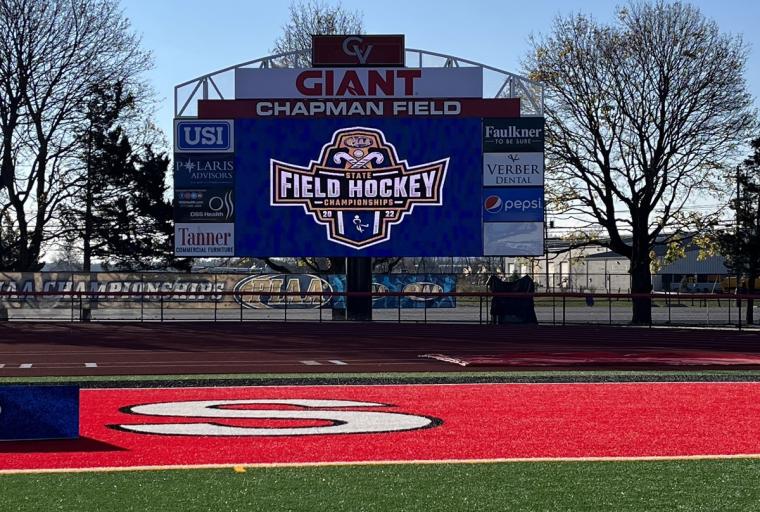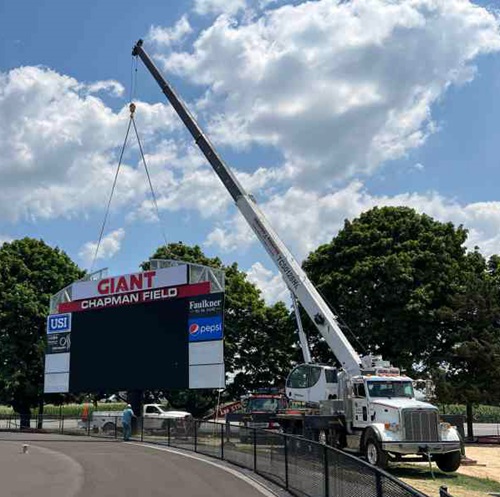
For nearly a quarter of a century, the Pennsylvania Interscholastic Athletic Association (PIAA) had called Hersheypark Stadium home for its high school state championship competitions in football, field hockey, and soccer. Hershey, known for its chocolate factory and amusement park, was an iconic location, but the stadium surprisingly lacked a digital scoreboard. This absence, coupled with concerns over costs and venue availability, prompted the PIAA to issue a Request for Proposal seeking a new host for these prestigious games.
The Altoona School District and Penn State University submitted their bids, but the Cumberland Valley School District (CVSD) in Mechanicsburg had a game-changing plan in mind.
Mike Willis, Director of Business & Support Services at CVSD, believed that upgrading their athletic facilities would not only enhance the game day experience for athletes and fans but also impress the selection committee while having a lasting positive impact on the students and community. This vision included installing a new track and, crucially, procuring cutting-edge video scoreboards for the football stadium and turf field.
CVSD's dissatisfaction with a malfunctioning, outdated digital video board from nearly two decades ago added urgency to its upgrade plans. In their quest to transform the game experience, they turned to Strickler Signs in New Oxford, Penn., a trusted partner of Watchfire, a leading digital signage manufacturer.
Ray Wenger, a sales representative from Strickler Signs, worked closely with CVSD to assess their needs and budget constraints. Wenger understood that CVSD’s investment needed first and foremost to benefit the school community, and the goal was to maximize the value of every dollar spent.
 The school district ultimately selected two large video boards, one with a 10mm pixel pitch measuring 18’ x 32’ at Chapman Field Stadium, and another with the same pixel pitch measuring 14’ x 24’ for Eagleview Field. While a 16mm pixel pitch would have sufficed for both locations, the 10mm pixel pitch delivered especially vibrant and crisp content.
The school district ultimately selected two large video boards, one with a 10mm pixel pitch measuring 18’ x 32’ at Chapman Field Stadium, and another with the same pixel pitch measuring 14’ x 24’ for Eagleview Field. While a 16mm pixel pitch would have sufficed for both locations, the 10mm pixel pitch delivered especially vibrant and crisp content.
The decision to invest in facility upgrades was rewarded when CVSD secured the prestigious opportunity to host the PIAA state championships for football, field hockey, volleyball, and soccer through 2025. The new Watchfire video boards made their debut during the state championships, instantly elevating the game experience.
From the moment student-athletes step onto the field, the new video boards provide a collegiate-level game experience. They showcase player photos, stats, and exhilarating video highlights. The displays offer live-action footage and full instant replay capabilities while engaging the audience with interactive prompts, creating an exciting atmosphere throughout the games.
Ray Wenger explained that smaller schools are increasingly gravitating toward video boards because they enhance the overall experience. High school football holds immense importance both locally and nationally, and as video board technology becomes more cost-effective, schools are eager to bring a collegiate-level experience to their high school events.
CVSD quickly realized that their new displays could serve multiple purposes beyond sports. They used the video board at Chapman Field Stadium to broadcast performances during their annual band competition, "Echoes in the Valley." Additionally, the football stadium hosted an event for special needs students, utilizing the video boards for announcements, inspirational videos, and replays of event action.
CVSD even established a video club for students to create content for the displays. Opportunities range from on-site reporting during games to behind-the-scenes production and content creation for broadcast.
CVSD avoided using taxpayer funds to finance these displays, relying instead on independent donations. They have ambitious plans to work with Strickler Signs on more digital video board projects, further enhancing their sports venues and creating a richer experience for students and the community.
Cumberland Valley School District's strategic investment in cutting-edge digital signage has transformed its sports venues into state-of-the-art facilities. Beyond enhancing the game day experience, these digital displays have become versatile tools for education, community engagement, and student involvement. As technology continues to advance and become more accessible, it's clear that digital signage has found a new home in the world of high school sports and education and has made it possible for these facilities to host prestigious events once available only to professional venues.

